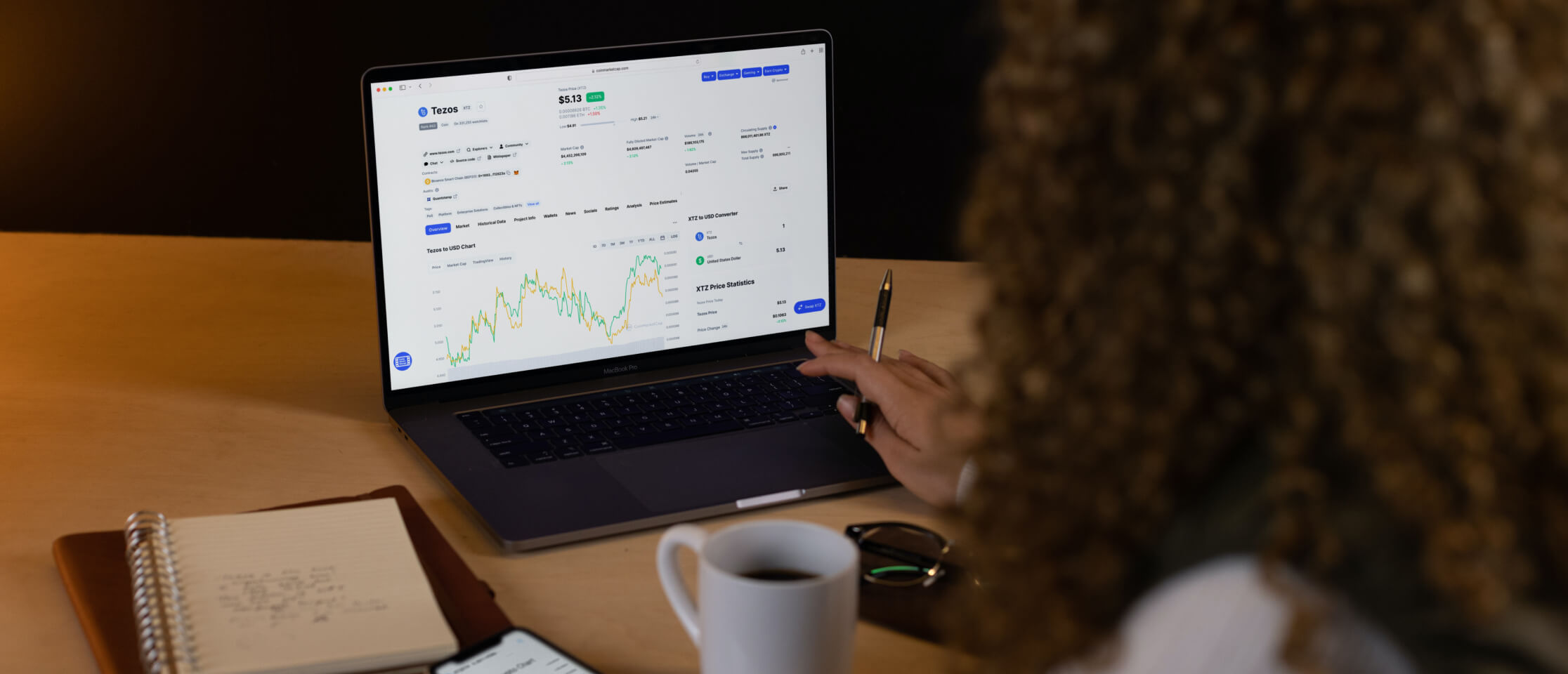What is Happening with High-Interest Rates? Things to Know
Saving money for the future is a rational decision that anyone can make. Inflation complicates this process, but many bank clients find a solution by opening a savings account with an interest rate. Great idea, right? But it seems to work only in theory.
The reason for this is that the level of interest rates is not high enough to turn savings in your favor. These are the consequences of today’s upside-down world in financial markets. The combination of high inflation, strong economic growth, and very low interest rates means that “real” interest rates — what you can earn with your money adjusted for inflation — are lower than they were before.
It’s why rates have dropped by more than 60% in the last 20 years. Today, the highest interest rates in the US clock in at around 1%. Though to achieve such “high” rates, you typically need to commit to a five-year deposit.
In this article, we’ll discuss the high-interest rate, provide a bit more detail on why interest rates are so low, and what you can do about it. Additionally, we will highlight how to assess and control the risks of your savings.
Falling interest rates
Interest rates have been steadily declining over the past several years. This is primarily due to unstable economic conditions and subsequent rate cuts by central banks around the world to stimulate the economy. This led to the emergence of excess liquidity, which made access to funds more affordable. This trend has been more pronounced since demonetization in 2016.
The decline had flattened for a while but accelerated again due to the COVID-19 situation. The pandemic has forced central banks around the world to cut interest rates to stimulate economic activity. As a result, interest rates in many countries are close to zero or negative.
How it impacts your life?
If you are saving money for the future, with low-interest rates and high inflation, be prepared to lose some of your savings. Falling interest rates are holding back savers and investors. When a situation like this occurs, the consequences spill over to the financial system. This can affect your finances, affecting the amount of interest you pay on loans or credit card rates and the amount of interest you receive from savings accounts. Most “safe” investment options, such as fixed deposits and bonds, are also negatively impacted as interest rates on fixed deposits fall and bond rates fall. Consequently, people whose income depends on these instruments will face a drop in their income.
Finding a way out
While there is a significant drop in profits and earnings as a result of falling interest rates, one may still find several options to benefit in this situation.
Government Bonds or GILTS: The bonds that are issued by the government are known as government bonds. You can invest in these bonds through EFTs, mutual funds, or directly. As an investor of these bonds, you can get benefits from a falling rate of interest. However, this investment option is ideal for you if you want to invest in the long term.
Sweep In Fixed Deposits: Some banks provide sweep in fixed deposit schemes. These FDs help you to convert your savings into fixed deposits for earning a higher rate of interest. Locking in the investment for a longer period may help to get a better return.
Stocks & Dividend-Paying Equities: Stockholders tend to have a higher interest rate and a chance at beating inflation. Companies generally pass along higher inflation in the form of higher prices, and the same market forces that increase inflation are also what tend to increase the value of companies.
Hard Assets: Physical assets to some extent might also benefit your long-term savings. Property values tend to rise and fall in line with inflation, increasing the value of your investments. Having a broad basket of commodities could also help, as could some amount of precious metals — both tending to be a haven from inflation.
Cryptocurrency*: You automatically get high risks here. However, when tracked across a decade, Bitcoin has indeed made profits for those who held it for a long time. Additionally, to avoid some of the risks one may consider Bitcoin ETF.
How to assess and control the risks of your savings?
Consider the main types of risk that your capital may be exposed to:
Inflation risk is the most common type of financial risk because it affects everyone with savings. Inflation devalues money savings. For 2021, US inflation is approximately 5.4%. Protection measures: Government Bonds or GILTS, Sweep In Fixed Deposits, Stocks & Dividend-Paying Equities, Hard Assets, Cryptocurrency, etc.*
Foreign exchange risk. The exchange rate of your native currency against foreign currencies may not be stable. Protection measures: A balanced portfolio of investments in different currencies. Find the benefits of international bank accounts here.
Credit risk arises when the person or organization that owes you goes bankrupt and cannot pay off debts. Protection measures: Deposit insurance, diversification, analysis of reliability ratings.
Market risk. When you invest in a financial product with non-fixed income like stocks, mutual funds, or bonds. *Protection measures: Diversification, thorough analysis, and search for more reliable assets.**
Physical risk. *Protection measures: Insurance.**
Disclaimer: Financial services and investments in volatile assets may involve the risk of loss. Nothing contained in this article should be construed as investment advice. Discussing your financial planning goals with a Financial Advisor can be a wise option for you — potentially increasing returns when interest rates are low.
Find the right financial service
Looking for a financial product that suits your need — Finscanner marketplace is the right place for you to get started! We provide a comprehensive overview of global banks, electronic money institutions, payment service providers, crypto platforms, and more. For instance, you can find the following crypto exchanges:
Bitcoin.com — an exchange registered in Saint Kitts and Nevis. Here one can trade more than 200 digital assets. As main advantages, the platform highlights that it is secure, fast and that they have dedicated 24/7 support.
OKEx — a cryptocurrency exchange created in 2014 by Chinese developer Star Xu. It makes it easy to buy, sell, or trade cryptocurrencies by offering over 400 trading pairs, including pairs with fiat. OKEx offers advanced financial services as well as excellent guides for anyone new to crypto. There are investment programs, a referral program, and additional bonuses.
Binance — a crypto exchange founded in 2017 by Changpeng Zhao and registered in the Cayman Islands. It is the largest cryptocurrency exchange in the world in terms of trading volume, with more than 1.4 million transactions per second. The exchange strictly adheres to US regulations, is compatible with multiple devices, and provides safe and convenient trading.
Experience the automation of processes by interacting on a single publicly open and transparent platform. Apply to any desired financial product today just in a few easy clicks!
Read also

Finance
The Future of Money – Will Physical Money Disappear?
Over the past few years, much attention has been paid to the future of money.

Finance
Mobile Banking for Abroad Students in Europe
Studying in Europe is becoming more popular and relevant, due to the high quality of education and the prospect of building a brilliant international career.